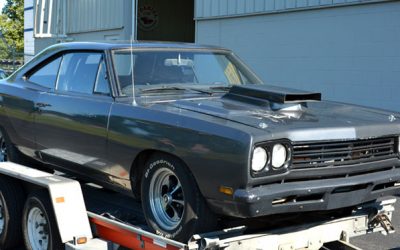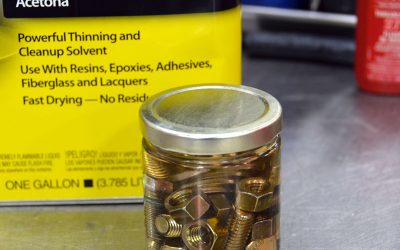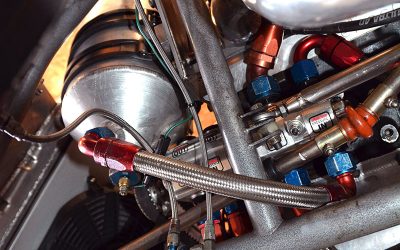 When I first saw the phrase “rat rod” on craigslist.com some years ago, I knew intuitively what it meant, and it made me smile. I go to my local vintage/antique/hot rod shows, which are usually held in the shade of beautiful old live oaks at various venues in Florida, and I occasionally make it out to Las Vegas for SEMA. I always admire and marvel at the perfect craftsmanship the custom and restored cars exhibit. Lord, I sure would like to have the time, money, and storage space to create and keep, say, a ’32 Ford Coupe with a spotless, chromed, and cammed 289 in it, or maybe a ’40s flathead with its incredible, unmistakable sound. But I don’t. Magazine editorial work hasn’t been particularly lucrative for years and years, and I have a family to support. Plus, the shop space I have needs to be available for regular bread-and-butter automotive repairs and maintenance, not hobby pursuits.
When I first saw the phrase “rat rod” on craigslist.com some years ago, I knew intuitively what it meant, and it made me smile. I go to my local vintage/antique/hot rod shows, which are usually held in the shade of beautiful old live oaks at various venues in Florida, and I occasionally make it out to Las Vegas for SEMA. I always admire and marvel at the perfect craftsmanship the custom and restored cars exhibit. Lord, I sure would like to have the time, money, and storage space to create and keep, say, a ’32 Ford Coupe with a spotless, chromed, and cammed 289 in it, or maybe a ’40s flathead with its incredible, unmistakable sound. But I don’t. Magazine editorial work hasn’t been particularly lucrative for years and years, and I have a family to support. Plus, the shop space I have needs to be available for regular bread-and-butter automotive repairs and maintenance, not hobby pursuits.
The rat-rod concept, however, is approachable even to somebody like me. Googling the term produced almost 1.5M hits, so there must be plenty of people out there who are having fun fooling with automotive “works in progress.” Another aspect of the appeal is the “Mad Max,” steampunk kind of rebellious, distopian image rat rods evoke. I don’t think I’d be decorating mine with skulls, spikes, and iron crosses, but I get the idea.
As is inevitible with any trend, there’s a magazine devoted to this one both in print and online. Rat Rod states that the phenomenon is “the automotive world’s fastest growing scene,” and in its pages I found a good definition of it by Steve Thaemert:
“I used to spend a stupid amount of time trying to explain my stance on what a rat rod is and how I have formulated that opinion, but it all comes down to this: A rat rod is simply a blue-collar hot rod… the working-class answer to high-buck hot rods and street rods and all the pageantry and ego that seems to go along with them. Rat rods are about heart, history, and having a good time.”
PT‘s exec tech editor, Greg McConiga, is nothing if not a seasoned and precise craftsman. Even though he’s one of my closest friends, I wonder what kind of reaction he’s going to have to this column. Okay, Greg, I know somebody’s got to be the perfectionist, but that’s something I simply can’t afford to be for all the reasons already mentioned. That doesn’t mean I wouldn’t thoroughly enjoy fooling around with my own automotive creation.
I can do all the work myself, and I’m not afraid of a little Bondo. I’ve painted lots of cars, but nobody would ever call me an artiste. I remember spraying a ’65 Chevelle hardtop (after fixing substantial rust using a saber saw, Ospho, sheet galv, pop rivets, a spot welder, and polyester body filler) with Rust-O-Leum white gloss outdoors in the bugs, pollen, and dust. Not perfect, of course, but shiny and presentable. RRs are usually kept in primer anyway — you might even think of using a roller and some foam brushes to save masking time.
In my last PT column, I mentioned that my little grandsons, ages two and three, are car guys. They have an assortment of leg-propelled vehicles at our house, but the ones they love to race up and down the long hallway are two miniature plastic fire trucks with hollow wheels that are so noisy on the hardwood floor that I can barely have a conversation with my wife. They zoom toward a closed door, then skid sideways to stop, quite skillfully. One of the trucks is an old, sun-bleached rat of a hand-me-down toy, but the other is a recent Christmas present that’s all shiny and even has sound effects. They swap them/ride them with no preference. It doesn’t matter to them how they look. They only “care how they tear.”
[alert variation=”alert-info”]People have told me they like my magazine editor’s columns and articles. If you’ve ever enjoyed my writing, you might want to take a look at a novel I just published on amazon.com/kindle-ebooks, Worm of the Pebbles, a fast-moving, authentic action story very different from what you’re probably used to reading. Thanks![/alert]




0 Comments